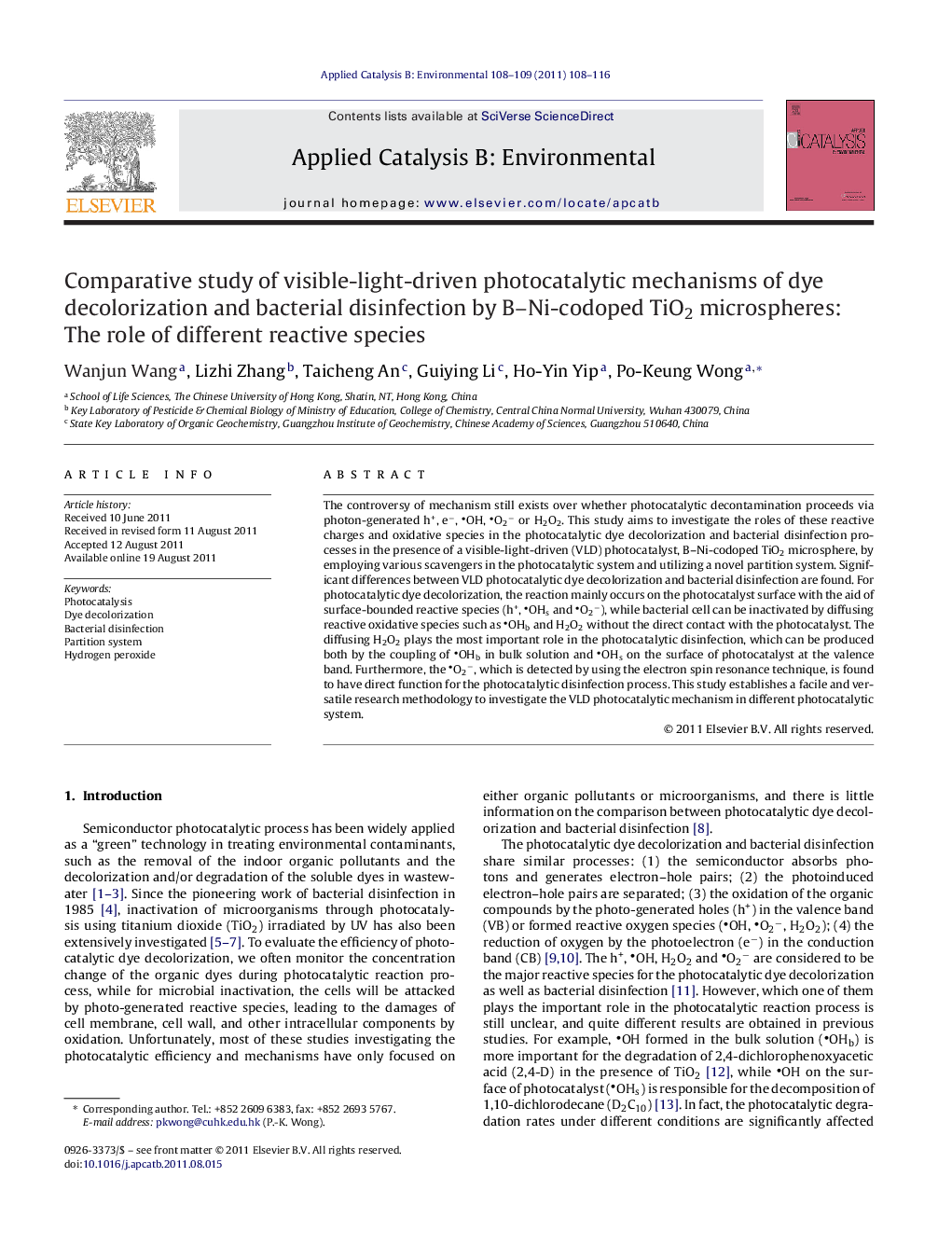| کد مقاله | کد نشریه | سال انتشار | مقاله انگلیسی | نسخه تمام متن |
|---|---|---|---|---|
| 46773 | 46448 | 2011 | 9 صفحه PDF | دانلود رایگان |

The controversy of mechanism still exists over whether photocatalytic decontamination proceeds via photon-generated h+, e−, OH, O2− or H2O2. This study aims to investigate the roles of these reactive charges and oxidative species in the photocatalytic dye decolorization and bacterial disinfection processes in the presence of a visible-light-driven (VLD) photocatalyst, B–Ni-codoped TiO2 microsphere, by employing various scavengers in the photocatalytic system and utilizing a novel partition system. Significant differences between VLD photocatalytic dye decolorization and bacterial disinfection are found. For photocatalytic dye decolorization, the reaction mainly occurs on the photocatalyst surface with the aid of surface-bounded reactive species (h+, OHs and O2−), while bacterial cell can be inactivated by diffusing reactive oxidative species such as OHb and H2O2 without the direct contact with the photocatalyst. The diffusing H2O2 plays the most important role in the photocatalytic disinfection, which can be produced both by the coupling of OHb in bulk solution and OHs on the surface of photocatalyst at the valence band. Furthermore, the O2−, which is detected by using the electron spin resonance technique, is found to have direct function for the photocatalytic disinfection process. This study establishes a facile and versatile research methodology to investigate the VLD photocatalytic mechanism in different photocatalytic system.
For photocatalytic decolorization of dye, the reaction mainly occurs on the catalyst surface with the aid of surface-bounded reactive species (h+, OHs and O2−), while bacteria can be long-range inactivated without the direct contact with the photocatalysts.Figure optionsDownload as PowerPoint slideHighlights
► Bacterial disinfection does not require direct contact with BNT catalyst, while dye decolorization requires.
► H2O2 plays the major role in bacterial disinfection.
► Coupling of both OHb and OHs produces H2O2 in the valence band.
► O2− directly involves bacterial disinfection.
► A versatile research strategy is developed to study the photocatalytic mechanisms.
Journal: Applied Catalysis B: Environmental - Volumes 108–109, 11 October 2011, Pages 108–116